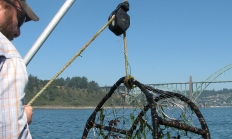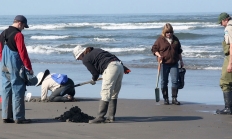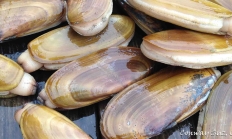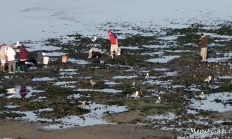Search myodfw.com
Showing 1 - 20 of 1507 results
Article
Lower Yaquina Bay is “marine dominated”, meaning there is little freshwater influence, and offers many shellfishing oppurtunities.

Workshop and Events
Date
July 30, 31 and August 20
Location
Denman Wildlife Area 1495 E. Gregory Rd, Central Point 97502


Workshop and Events
Date
July 23, 2022
Location
Green Peter Reservoir by Kokanee Power Oregon

Workshop and Events
Date
July 16, 2022
Location
Sunnyside Park, Foster Reservoir: 44930 Quartzville Dr, Foster, 97345

Article
Digging razor clams is a challenging and fun recreational pastime with delicious rewards. Continue reading to learn some fundamental skills needed to harvest razor clams.

Article
As much of Oregon continues to experience years of on-going drought, hunters, anglers and wildlife viewers can expect the continued warm, dry conditions to impact their activities. This page includes tips to help you continue to enjoy the outdoors during drought conditions.

Article
Razor clams and other bivalves are filter feeders that eat single celled plants called phytoplankton. Some species of phytoplankton manufacture biological toxins that, if ingested by bivalves, will be stored in their flesh. Though the biotoxins do not make the shellfish sick, they will make humans sick if a person consumes an affected animal.

Article
Black bears are part of the natural ecosystem but conflict can occur when they enter our space, or we enter theirs. Follow these tips to help keep bears wild, and people safe.

Article
Learning the flight patterns of the birds, and honing your long-range shooting skills are keys to this unique and challenging hunting experience.
August 4, 2022

Article
Oregon estuaries are rich with many species of clams, although only a few of these species are commonly harvested. Gaper, butter, cockle, littleneck, softshell and purple varnish clams are popularly harvested due to their abundance, size and taste. A wide variety of other bivalve species are found in Oregon estuaries, but not commonly harvested due either to their scarcity or poor taste.

Workshop and Events
Date
Aug 20, 2023
Location
Creswell Clay Sports, 81078 N Pacific Hwy, Creswell, 97426
Workshop and Events
Date
Aug 8, 2023
Location
ODFW Office Conference room, 3561 Klindt Dr, The Dalles, 97058
Workshop and Events
Date
Weekends in September
Location
21 hunts throughout the State!

Article
Legal shooting hours for game bird and Northwest Permit Goose during the 2024-25 hunting seasons.
July 22, 2024

Workshop and Events
Date
Sabado Agosto 19
Location
28925 NW Reeder Rd. Portland, OR 97231
Article
The Oregon Department of Fish and Wildlife owns or manages nearly 200,000 acres of land set aside for wildlife use and public recreation. The ODFW Wildlife Area Parking Permit helps fund habitat improvements and visitor amenities such as parking, restrooms and interpretive signs at these wildlife refuges.

Landing page
Find maps, boundary descriptions and the percent public land in the Biggs Unit.
September 05, 2017
Workshop and Events
Date
Sept 9 and 10, 2023
Location
La Grande Gun Club and Ladd Marsh Wildlife Area - see listing

Article
Hunt by Reservation landowners are diverse. They range from small rural farms to large land trusts. Some need help reducing wildlife damage; others simply want to provide hunting access but don't have the time or tools to manage hunters. Learn more about the Hunt by Reservation Program
August 17, 2023

